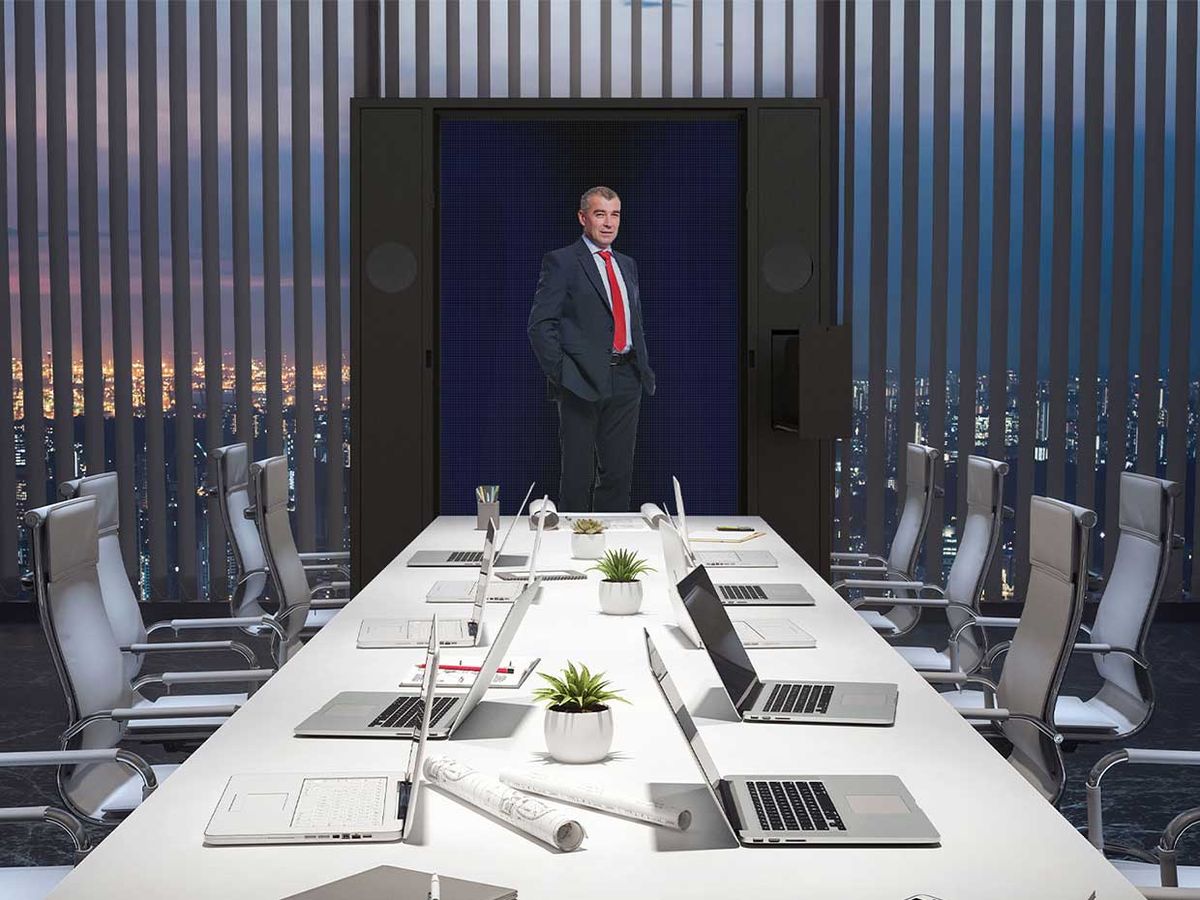Holograms, in the post-COVID hybrid workforce, may be joining in-person attendees at business conferences before long. The coming decade could in fact see holographic tele-presence—as made famous by a virtual performance from the late rapper Tupac Shakur at the Coachella Valley Music and Arts Festival in 2012—making its way into more everyday settings like the company staff meeting.
At a recent Microsoft Ignite conference for developers and IT professionals, Microsoft showed how its Microsoft Mesh mixed reality platform, incorporated with Microsoft Cloud, will transform communication using avatars and what they call “holoportation.” During a keynote, director James Cameron spoke with Microsoft Technical Fellow Alex Kipman to demonstrate Mesh while wearing Microsoft HoloLens 2 headsets. Using Mesh, people will be able to teleport onto a lab on a ship or a factory floor, according to Microsoft.
Kipman and Cameron demonstrated how real holograms can seem, but there’s still room for development, according to Rob Enderle, principal analyst at the Enderle Group. “Microsoft’s latest effort sets a high bar but still not where it will need to be for this technology to reach its full potential,” Enderle says.
Real Holograms at Work
ARHT Media, a company that makes hologram technology, has built a solution called the HoloPod, a 3D hologram cabinet on wheels geared toward boardrooms and lecture halls. ARHT’s technology uses green screen studios along with an HD webcam, built-in HD projector and a proprietary holopresence display.
What distinguishes the holograms from a typical HD display in a videoconferencing call is the 3D display, says Larry O’Reilly, the CEO of ARHT Media. He adds that people will not need 3D glasses to see the holograms.
“What we’re doing is we’re putting a video feed onto a mesh that is painted with proprietary highly reflective paint,” O’Reilly explains. “Then that image is actually reflected back to the audience.” Mesh refers to a weaved material.
O'Reilly explains that approximately 70 percent of the light goes through the screen, and 30 percent of the light captures the highly reflective paint placed on the mesh.
ARHT carefully adjusts the lighting on both side of the speaker. “If we light the subject properly on the capture side, when it plays back, you don't see the screen. All you see is the subject and the person,” O’Reilly continues. “Your eye fuses that information and creates the illusion of 3D in depth.”
O’Reilly says that the life-sized holograms certainly catch people’s attention—and may even make their contribution more memorable than if they were attending the event in person. He demonstrated the technology at a recent virtual Northwest Event Show in Seattle. O’Reilly beamed his presentation from Toronto.
O’Reilly saves a lot of miles by beaming into several cities in one day to test his software. “I beam in from Toronto into London, I do a couple of meetings ‘in person’ in London. Then I beam into New York, and I do one or two meetings in New York. … And I haven't even left Toronto.”
O’Reilly says accounting and consulting firms are using ARHT’s hologram technology. Also, he says, medical professionals use hologram technology to educate doctors about vaccines and medication.
Is it realistic for holograms to become a regular presence at business meetings? “Yes, as technology advances, these will increasingly be used to simulate our being in remote locations without needing to travel physically,” Enderle says.
However, it is not just the business world that is seeing experimentation with holograms. O’Reilly says the biggest demand for ARHT will be in entertainment. ARHT worked with Live Nation to beam in bands such as The Good Bones for concerts, O’Reilly recalled. The band interacted with a live audience in between songs as if they were in the room. He also notes that the actor Jason Momoa used ARHT’s hologram technology to promote the movie Aquaman when he was in New York City hosting “Saturday Night Live.”
“The biggest use case I see for us on an ongoing basis will be the Hollywood studios using us to beam their talent around the world to promote movies, because they’re not going to want to travel like they did before,” O’Reilly says.
The Future for Holograms
Although companies are making great progress in demonstrating how holograms can join business meetings, they are still in the early stages, according to Enderle. Look for a “mature solution” in the second half of the 2020s, he predicts.
“The goal is to make travel digitally indistinguishable from traveling in person. We are getting closer, but elements like fully instrumenting the body and creating photorealistic avatars have been lacking,” Enderle says. “We are seeing the promise that something wonderful and amazing is coming, but the reality is still years off.”
Jeff Deleon, CEO of HoloVit Holography Systems, agrees that it will take time for holograms to be a regular part of the business world.
“We know how to do holographic live broadcasting, but it will take time for it to enter our daily lives as computer processors are insufficient,” Deleon says.
Bringing about live holograms will be inevitable because the human brain naturally perceives its surroundings in 3D, according to Ivo Petrov, executive chairman of Imverse, a B2B software company that provides 3D hologram video technology.
Petrov says Imverse is currently testing live 3D holograms to be used in virtual boardrooms. The company plans to show its first iterations by the end of 2021.



